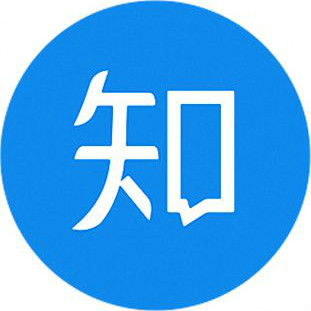Top 10 CSR Trends in China (2020)
Trend One: New Starting Point
The year of concluding the Three Critical Battles and preparing next 5-Year-Plan
2020 is a year of succession. This year is a key year to achieve the goal of building a moderately prosperous society in all respects and to fulfill the first hundred-year goal of the two-hundred-year goals of the great rejuvenation of the Chinese nation. 2020 is also the final sprint of the 13th Five-Year Plan and the Three Critical Battles.
2020 is the beginning of several tasks: 46 cities in the mainland will have new waste sorting programs; country requires an indicator system for construction of zero-waste cities; the Hong Kong Stock Exchange's ESG reporting guide will be implemented in the fiscal year after July 1; domestic capital market is expected to begin to force A-share companies to disclose environmental information. Internationally, the Paris Agreement has also reached a critical point, where the contracting parties must set the 2030 emission reduction target by the end of this year.
2020 is also a crucial year for the preparation of the 14th Five-Year Plan. This will be the first five-year plan after China’s per capita GDP exceeds $10,000. It will inevitably be very different from the past. High-quality development, rural rejuvenation, and social justice are expected to be focuses of next growth.
The implementation and realization of the above macro goals cannot be achieved without the participation of the private sector. Companies should better measure and report their efforts and impacts. They should follow such policy directions with an open mind and a forward-looking vision.
Trend Two: New Image
Communicating Chinese stories by supporting UN SDGs
The United Nations Sustainable Development Goals (SDGs) has entered the fifth year, and the focus will shift from awareness-raising to implementation and experience sharing. Chinese government supports SDGs. Sino-US trade frictions will not weaken China’s standing but stimulate China to play a more active role through UN platform. China's experience in poverty eradication and environmental governance is meaningful for developing countries.
The Belt-and-Road Initiative (BRI) is also a platform for telling Chinese stories. In 2020, BRI will continue growing with more projects being implemented. How can Chinese overseas investment integrate SDGs? How can Chinese companies improve their capabilities on issues such as supply chain responsibility management, community engagement, employee volunteers, and transparency? All these are linked to the global image of Chinese investment and will attract more attention from Chinese government and companies.
In China, the Beijing 2022 Winter Olympics is approaching. The Winter Olympic Organizing Committee has obtained a sustainable management system certification at the end of 2019, which will become a new element of the SDGs China story. The Conference of the Parties (COP15) to the United Nations Convention on Biological Diversity (CBD), to be held in Yunnan at the end of 2020, will provide a new opportunity for the Chinese story.
Chinese companies have risen to the largest group of the Fortune 500 in 2019. There is a strong need for these companies to learn to tell Chinese stories in international languages such as SDGs. This will create mutual benefits to business development and international relations.
Trend Three: New Rural Areas
Building a sustainable model for eliminating relative poverty
After the goal of building a moderately prosperous society in 2020 has been achieved, China will eliminate absolute poverty under current standards, but relative poverty will continue to exist for a long time. President Xi has pointed out, "Now poverty alleviation measures for absolute poverty should be gradually adjusted to daily assistance measures for relative poverty and be integrated into the strategic framework for rural revitalization."
2018-2022 Strategic Planning for Revitalization of Rural Areas provides a policy framework for work in the next three years. The overall requirements are industrial prosperity, ecological livability, rural customs and civilization, effective governance, and affluent life. China is stepping up to achieve a comprehensive rural revitalization including industrial revitalization, talent revitalization, cultural revitalization, ecological revitalization, and organizational revitalization.
Building an industrial value chain is the key to make business sustainable. Different kinds of companies can do much by connecting their core business to sustainable development strategies. Focusing on accelerating the construction of a modern agricultural industrial system, production system, and operating system, companies could purchase products and services from poor areas in their production, distribution, consumption. Focusing on issues such as infrastructure construction, supply chain services and production base construction, companies could open up and optimize their supply chains. By improving agricultural innovation, competitiveness, and total factor productivity, companies could enhance the competitiveness of their industrial value chain.
Trend Four: New Fashion
Piloting waste sorting and zero-waste cities
Waste sorting is becoming a new fashion in cities. Shanghai took the lead in implementing mandatory waste sorting in 2019 and played a demonstrative role. In 2020, more than forty cities nationwide will carry out waste sorting. On December 27, 2019, members of the Standing Committee of the National People's Congress conducted a group review of the second draft of the Law on the Prevention and Control of Environmental Pollution by Solid Wastes and suggested that waste sorting will be further standardized, which means that the legalization process of waste sorting has accelerated.
At the same time, the government is vigorously advocating the construction of zero-waste cities. In April 2019, 11 cities including Shenzhen and Baotou, and 5 special cases including Xiong'an New District and Sino-Singapore Tianjin Eco-City were selected as zero-waste pilots. 2020 will be a crucial year for the pilot exploration of zero-waste cities, and a lot of work will be carried out on legal, market and regulatory system, in order to accumulate useful experiences by March 2021.
Companies that generate a large amount of waste in the production and consumption process should pay attention to waste management. According to the 2019 China Sustainable Consumption Report published by SynTao, waste sorting and recycling are the most frequently mentioned terms by Chinese consumers. This will force companies to consider waste from life-cycle perspective covering design, production, packaging, and recycling.
Trend Five: New Wave
Responding to climate change by carbon reduction
2015 Paris Agreement sets out the goal to limit global temperature rise to well below 2 degrees Celsius, making carbon reduction a clear policy expectation, which will have direct or indirect impacts on all sectors. At the same time, people around the world have paid unprecedented attention to climate change, pressing companies to take actions. It is expected that more big companies will combat climate change in 2020, forming a new wave of companies' response to climate change since the 21st century.
Unlike the first wave triggered by the entry into force of the Kyoto Protocol in 2005, in this wave, financial market will play a stronger role than carbon market in pricing carbon. Financial regulators in various countries will use policy instruments to internalize carbon costs into corporate costs through capital market and banking system. Large companies are the first to feel the pressure, and small companies will also sense the pressure through capital chain and supply chain.
China will be the leader in this new wave of climate change. In 2020, many multinationals especially European companies will require their China operation to reduce or offset carbon emission. This is because Chinese market is the most important production and sales market outside the headquarters for these multinationals. Some leading Chinese companies are expected to launch voluntary carbon reduction commitments in 2020.
Trend Six: New Disclosure
Strengthening quantitative and carbon disclosure in ESG Reports
On December 18, 2019, the newly revised ESG Reporting Guide of the Hong Kong Stock Exchange was released as scheduled. It is the third edition since 2012. With this revision, the Hong Kong Stock Exchange has increased the requirements for ESG disclosure: the board should oversee ESG issues and review progress made against ESG-related goals and targets; social key performance indicators have been upgraded from recommended disclosure to Comply or Explain. This indicates stricter ESG disclosure and increases market expectations of A-share ESG reporting guide.
Corresponding to the climate change trend, this ESG reporting guide requires disclosure of significant climate-related issues, and to identify and respond to mitigation measures on major climate-related issues that have and may affect the issuers. Issuers are required to disclose greenhouse gas emissions in scope 1 (mainly emissions from their own facilities) and scope 2 (mainly emissions from using electricity). Listed companies should establish a more efficient ESG data management system to collect and manage data on carbon emissions, energy consumption, water consumption, and waste reduction.
The policy recommendations of the Climate-Related Financial Disclosure Working Group (TCFD), which have been cited repeatedly by the Hong Kong Stock Exchange, deserve more attention. Companies can use the TCFD framework for climate risk scenario analysis and stress testing.
Trend Seven: New Benchmark
Improving governance of companies through ESG rating
Better ESG disclosure will help ESG rating. In 2020, ESG rating service providers such as SynTao Green Finance, MSCI, and FTSE Russell will increase coverage of Chinese A-share companies. It is expected that ESG ratings will be recognized, accepted and used by more mainstream financial institutions in China. ESG funds, ESG indices and ETFs will grow rapidly.
For listed companies, ESG rating provides a new benchmark that is different from financial indicators. It measures the value of a company based on non-financial indicators such as corporate governance, pollution, energy efficiency, labor relations, and community relations. The combination of financial indicators and ESG indicators will undoubtedly provide a more comprehensive assessment of future growth potential of companies. Therefore, ESG rating will improve listed companies’ governance, especially on environmental and social issues.
In many listed companies, the focal point of ESG rating is often in the investor relation department. Consequently, communication between investor relation department and CSR department will be more frequent. For CSR managers, this is a good opportunity to show the value of CSR. They should grasp related knowledge as soon as possible and understand the relationship between ESG and CSR.
Trend Eight: New Communication
Innovating stakeholder communication in the 5G era
2020 is the first year of large-scale commercial use of 5G. The popularity of 5G mobile terminals will promote the rapid growth of short videos, virtual reality (VR), augmented reality (AR), etc. 5G has advantages of large broadband, low latency, and large connections, which will reform the ways of creating, organizing and transmitting information and contents. These will change CSR communication in terms of media, content, and interaction.
The ubiquitous connectivity of 5G will reshape stakeholder communication. In the 5G era, everything is interconnected. Companies can better understand stakeholders through Internet of Things (IOT), supplemented by the powerful data analysis of artificial intelligence (AI). This will create unlimited possibilities for stakeholder communication innovation. In the 5G era, short videos, live broadcast platforms and we-media will be further developed, and CSR events will be spread more widely. However, this will create challenges that it is more difficult to identify the source of information.
No matter how cool technology is, it is only a tool; no matter how advanced the machine is, it cannot replace human. Listening carefully, responding to concerns, and building trust is still the essence of stakeholder communication.
Trend Nine: New Boundary
Extending responsibility along value chain and value network
Responsibility of a company is extending along the supply chain and value chain. Its boundary is not set by law, but by the expectations of key stakeholders. In 2020, the boundary of responsibilities will be further extended.
At home, it is policy that drives extended responsibility. The 2016 Implementation Plan for Extended Producer Responsibility System applied extended producer responsibility to four types of business: electrical appliances, automobiles, lead-acid batteries, and packaging materials. It is expected that an initial policy system will be formed in 2020. Not long ago, the National Development and Reform Commission (NDRC) issued a draft of Interim Measures for the Management of the Recycling and Utilization of Lead Batteries. At the same time, waste sorting and construction of zero waste cities also require companies to close the loop of production-consumption-recycling-regeneration. Internationally, in the context of increased trade frictions, some countries have extended CSR to more areas and a wider range of commodity value chains, especially some important raw materials. CSR compliance risks for Chinese companies will be increased.
The digital age has turned value chain, which is relatively isolated, into value network, an ecology interweaving value chain and stakeholders. In this value network, companies become nodes and face more responsibilities as well as opportunities. Companies need to better manager partnership and synergize various stakeholders.
Trend Ten: New Risk
Dealing with ethical risks in new technologies
New technologies such as artificial intelligence (AI) and gene editing are constantly changing, and many technologies can be applied to CSR. For example, blockchain technology has great potentials in food traceability and philanthropy transparent. However, technology is a double-edged sword, which can bring both benefits and troubles. It is necessary for high tech companies to adhere to the principles of prudence and soundness, considering environmental and social impacts fully. In 2019, Shanghai Stock Exchange also emphasized this in the Listing Rules for Science and Technology Innovation Board (China STAR), requiring listed companies to strictly abide by ethical norms and social responsibilities.
In 2020, data security and privacy protection are key compliance issues for high tech industry, especially internet companies. Regulators are expected to continue to crack down the black market of selling personal data and information. Software with improper collection of personal information, lack of user privacy agreements, or lack of a clear description of information collection, will face extremely high legal risks.
In the field of internet philanthropy, the Shuidichou(a crowd funding platform for philanthropy purpose)scandal at the end of 2019 has prompted the industry to rethink the risks of internet philanthropy, and even the boundary between business and philanthropy when talking about cross-border collaboration. Apparently, three bottom-lines of transparency, governance, and process should not be crossed.



